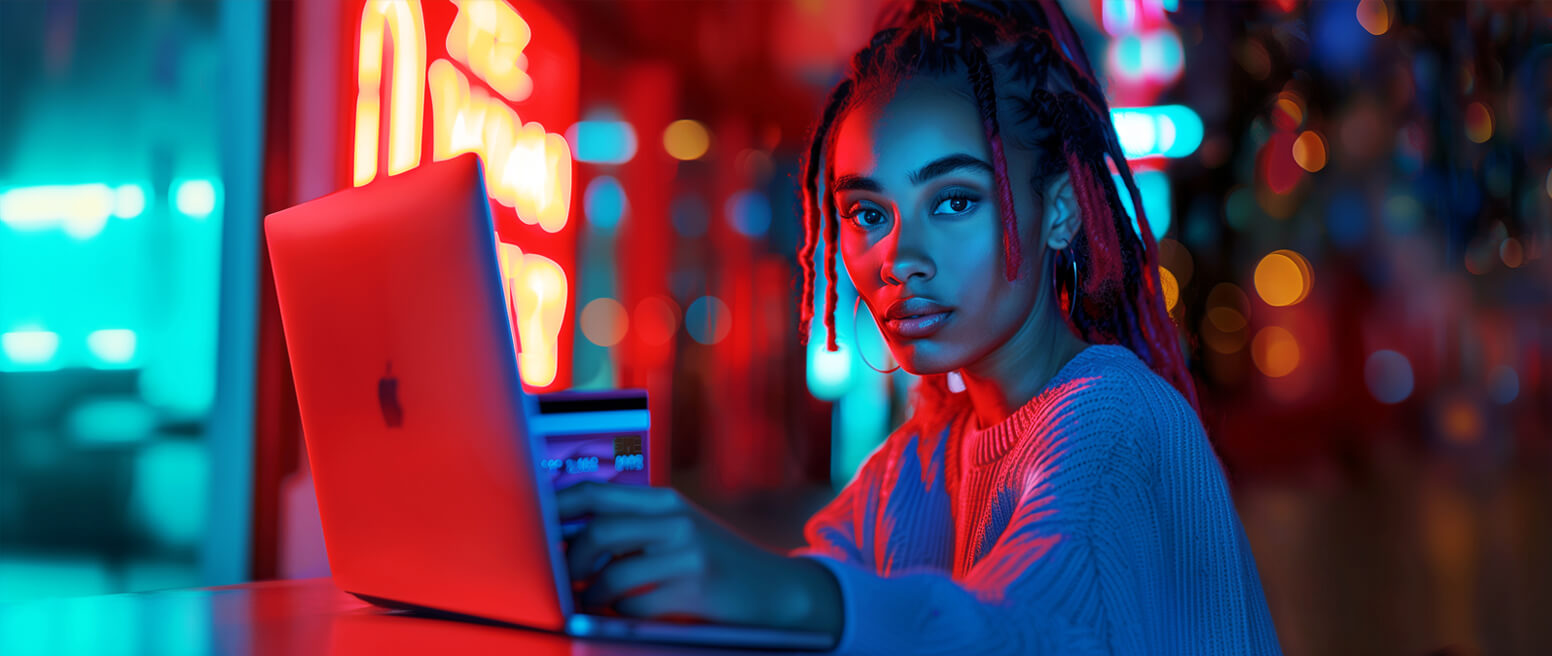The Top 10 Tips for Chargeback Fraud Prevention
Imagine you own a bike store. A customer walks in and purchases an expensive model but then calls you the next day and says they want their money back.
Being a reasonable merchant, you tell the customer to bring the bike back to the store for a full refund. To your surprise, however, the buyer says no. They insist that you should provide the refund without the bike being returned. Even more shocking, the customer’s bank actually agrees and reverses the charge.

That would be difficult to avoid in a brick-and-mortar store, but it happens all the time to online merchants.
It’s called chargeback fraud. Bad actors subvert the credit card chargeback system in order to get something for nothing. It’s a fast-growing threat; according to estimates by Juniper Research, chargebacks cost merchants around $130 billion in 2023, up from $40 billion in 2018.
Obviously, that’s not great. But, we do have some good news: you don’t have to be a victim.
Recommended reading
- Twitch Misadventure Highlights Growing Chargeback Problem
- How Cyber Shoplifting Works | Prevention & Revenue Recovery
- What is Return Fraud? 10 Tips for Merchants to Fight Back
- Post-Holiday Chargebacks Could Undermine 2024 Holiday Sales
- What is Chargeback Fraud? How do You Protect Yourself?
- What is First-Party Misuse? Accidental Chargebacks Explained
How Does Chargeback Fraud Work?
Chargeback fraud occurs when cardholders bypass you and go directly to the bank for a refund, knowing they’re not entitled to a chargeback. It’s a form of first-party fraud. So, ironically, a mechanism created to protect consumers is now being used by consumers to scam merchants.
There are a lot of common scenarios that can lead to chargeback fraud. For example, chargeback fraud can happen if the customer:
- wants a refund, but doesn’t want to pay return shipping.
- experiences “buyer’s remorse” and regrets making a purchase.
- feels the return process is too slow or complicated.
- assumes it’s easier to deal with the bank than request a refund.
- waited too long to request a refund and the return time limit expired.
Another common case is family fraud. This happens when a family member of the cardholder makes a purchase, but the cardholder doesn’t want to pay the bill.
Many illegitimate chargebacks result from mistakes or misunderstandings. For example, a cardholder who doesn’t recognize a charge or one who thinks a chargeback and a refund are the same thing. In contrast, deliberate chargeback fraud is a premeditated practice. You can learn more about this topic below:
Learn more about friendly fraudA 10-Step Strategy for Chargeback Fraud Prevention
The strategies you’d adopt to engage in chargeback fraud prevention are different from those you might use to fight account takeover or synthetic fraud.
For instance, one tactic that can help you fight criminal fraud is to deploy fraud filters. These tools can be helpful, but they’re designed to identify and block bogus orders before processing. Chargeback fraud, however, happens post-transaction. You won’t even know it’s fraud until after the fact.
It’s possible to tighten your fraud filter parameters, but false declines will cost you far more than you’ll save. Plus, you won’t have any measurable impact on chargeback fraud.
So, that points us to the key question: how do you prevent chargeback fraud from happening?
Chargeback fraud prevention requires a highly involved approach. It touches on customer service, data organization, and fraud mitigation technology. Below, we’ll outline ten key strategies that can help you protect your business against fraudulent chargebacks:
Of course, there’s a lot more to effective chargeback prevention than best practices. You’ll need to solve for resources, staffing, internal management, and risk assessment.
Now, you have to ask yourself a very frank and honest question: is this something you can accomplish in-house or on a budget?

Chargeback Fraud Prevention: Can I Do it on My Own?
Chargeback fraud prevention — and chargeback management in general — is too complex for a “one-size-fits-all” solution.
Your needs can vary dramatically according to product vertical, risk level, and other factors. A strategy that works for one merchant might be a complete bust for you. To make matters worse, your in-house fraud management department has several strikes against it right from the start:
Using the Right Tools to Prevent Chargeback Fraud
Handling chargeback management solely in-house is often impractical due to the complexities and resources required. Instead, it's more effective to use a combination of tactics and technologies, including both in-house and outsourced solutions.
There are a variety of tools at your disposal to tackle chargeback fraud. Some of the best options include:
Chargeback Alerts
Chargeback alerts are a crucial first line of defense, allowing merchants to intercept and resolve disputes before they escalate. These alerts are provided by third-party vendors who monitor chargeback activity and notify you when a potentially fraudulent chargeback is initiated. This early warning system gives you the opportunity to resolve customer disputes before they become costly chargebacks.
Learn more about chargeback alertsOrder Insight
Order Insight offers additional layers of protection by providing real-time data and transparency between merchants and cardholders. Order Insight allows you to provide both customer and the issuer with crucial data about Visa transactions, including shipping and tracking information. It lets you communicate directly in real-time, preventing disputes from escalating into chargebacks.
Learn more about Order InsightConsumer Clarity
Similar to Order Insight, Consumer Clarity lets you provide real-time data to both cardholders and banks regarding Mastercard transactions. With this key information, you can resolve inquiries before the devolve into chargebacks. It also allows you to directly communicate with customers before disputes can turn into costly chargebacks.
Learn more about Consumer ClarityVisa Rapid Dispute Resolution
RDR facilitates swift and automated dispute resolutions, reducing the time and resources needed to handle disputes manually. With RDR, Visa provides a rapid decision on disputes, saving merchants from the lengthy chargeback process. It's particularly useful for tackling friendly fraud, where customers may initiate a dispute instead of requesting a refund.
Learn more about RDRMastercom Collaboration
This tool supports seamless communication and collaboration among merchants, issuers, and acquirers to streamline the dispute process and minimize chargebacks. It enables real-time communication, efficient handling of disputes and provides insights to prevent future chargebacks. By working together, all parties can resolve disputes faster and more effectively.
Learn more about CollaborationBy leveraging these tools, merchants can significantly reduce the incidence and impact of chargeback fraud. Our data suggests that the average merchant could see up to a 90% reduction in chargeback issuances by incorporating these key tools into their arsenal.
Ready to get started?
Chargebacks911® works closely with your team to create a comprehensive strategy customized for your business. Best of all, it’s backed by the industry’s only performance-based ROI guarantee.
A better solution for chargeback fraud prevention is at your fingertips. Contact us today to learn more about how we can optimize your fraud management efforts.
FAQs
What is chargeback fraud prevention?
Chargeback fraud prevention involves implementing strategies to identify and mitigate fraudulent chargeback claims, where customers dispute legitimate transactions to obtain refunds without returning the purchased goods. This helps protect businesses from financial losses and maintains the integrity of the transaction process.
How do you defend against fraud chargebacks?
To defend against a chargeback, gather and submit compelling evidence that the transaction was legitimate, such as order confirmations, delivery tracking, and communication records with the customer. This documentation can help prove the validity of the sale and refute the chargeback claim.
What is an example of chargeback fraud?
Chargeback fraud occurs when a customer purchases an item online and falsely claims they never received it, requesting a refund through their bank. Despite the item being delivered and received, the bank reverses the charge, leaving the merchant at a loss.
Is chargeback fraud a felony?
The short answer is it depends. Chargeback fraud can be considered a felony, depending on the jurisdiction and the amount of money involved. Serious cases may lead to criminal charges, including fines and imprisonment, as it is a form of theft and fraud.
Who pays for chargeback fraud?
The merchant typically pays for chargeback fraud, as they lose both the product and the revenue from the sale. Additionally, they may incur chargeback fees and increased processing costs from their payment processor.












